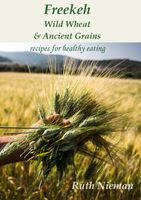Advertisement
Grains and pseudocereals
Appears in
By Ruth Nieman
Published 2021

Freekeh, wild wheats and ancient cereals formed the staple food of past eras, and these grains, many of which have been lost or fogotten with the passage of time, are now beginning to reappear again on our plates, reenergising our palates and replacing the missing nutrients from our diets.
During the First Temple period of 1000 BCE, the wheat and barley harvests of the ancient Israelites were put under sustained threat by the authoritarian rule of a rising kingdom, which ordered farmers to surrender their crops to the realm. By virtue of the obligatory weekly sacrifices in Solomon’s Temple, grain crops were protected, and it was permitted to bake unleavened goods for religious offering. These were offered to and consumed by the high priests as nourishment for their righteousness. It was in the Neo-Babylonian Empire of 586 BCE that the First Temple and its “threshing floor” was pillaged, destroyed and conquered by King Nebuchadnezzar.

